Richard Pousette-Dart as Printmaker
By Susan J. Cooke
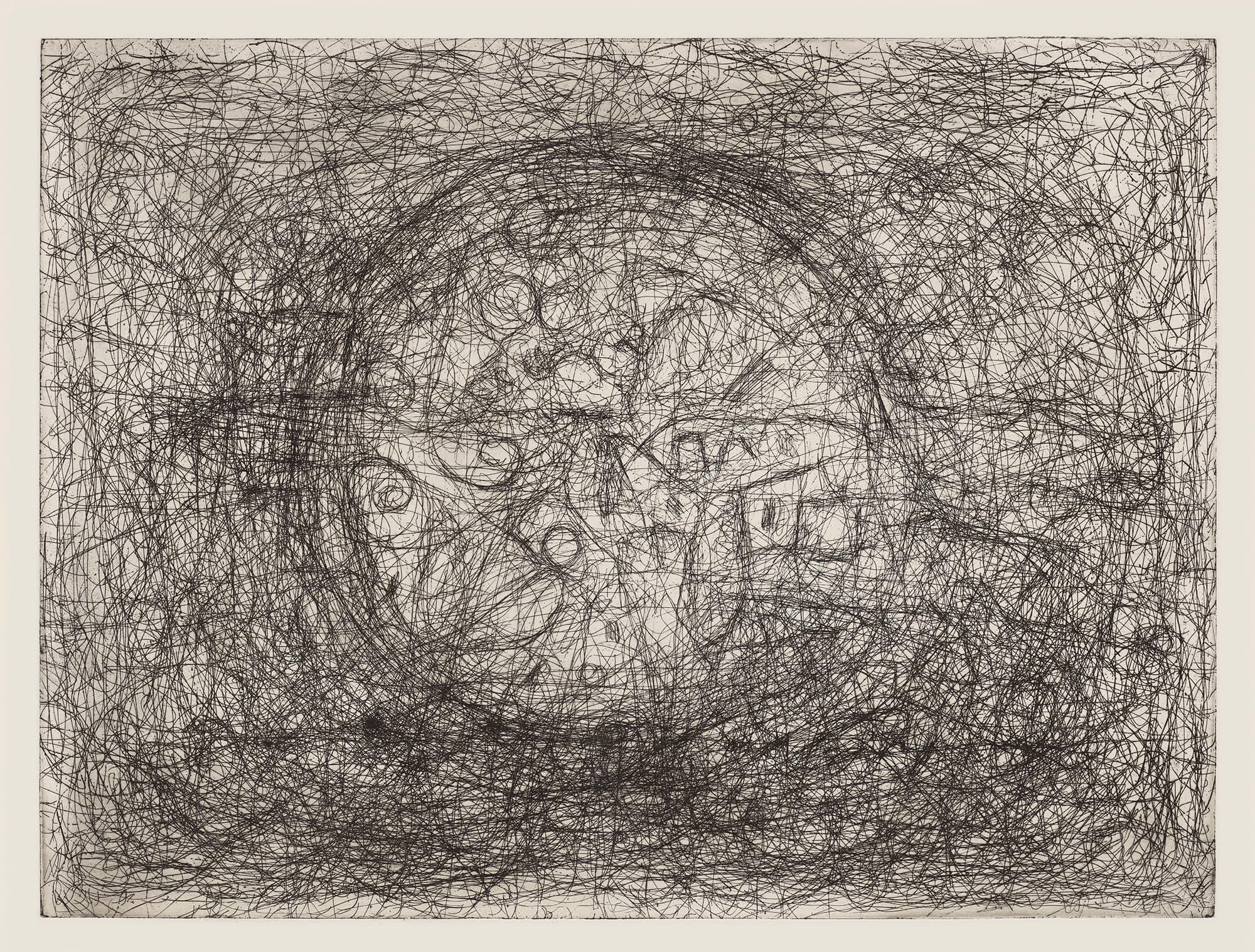
Center Being IV (Original Black Circle), 1979, etching on paper, sheet: 21 ¾ x 28 in. (55.2 x 71.1 cm)
At first glance, Center Being IV (Original Black Circle),1979, with its entanglement of thin black lines that coalesce to form a central emergent orb, might easily be mistaken for one of Richard Pousette-Dart’s abstract drawings, generated by the rhythmic strokes of a graphite pencil. Closer inspection of the work’s paper support and the particular character of its printed lines reveal the telltale signs of an image produced by the related but more indirect processes of intaglio printmaking, specifically etching.
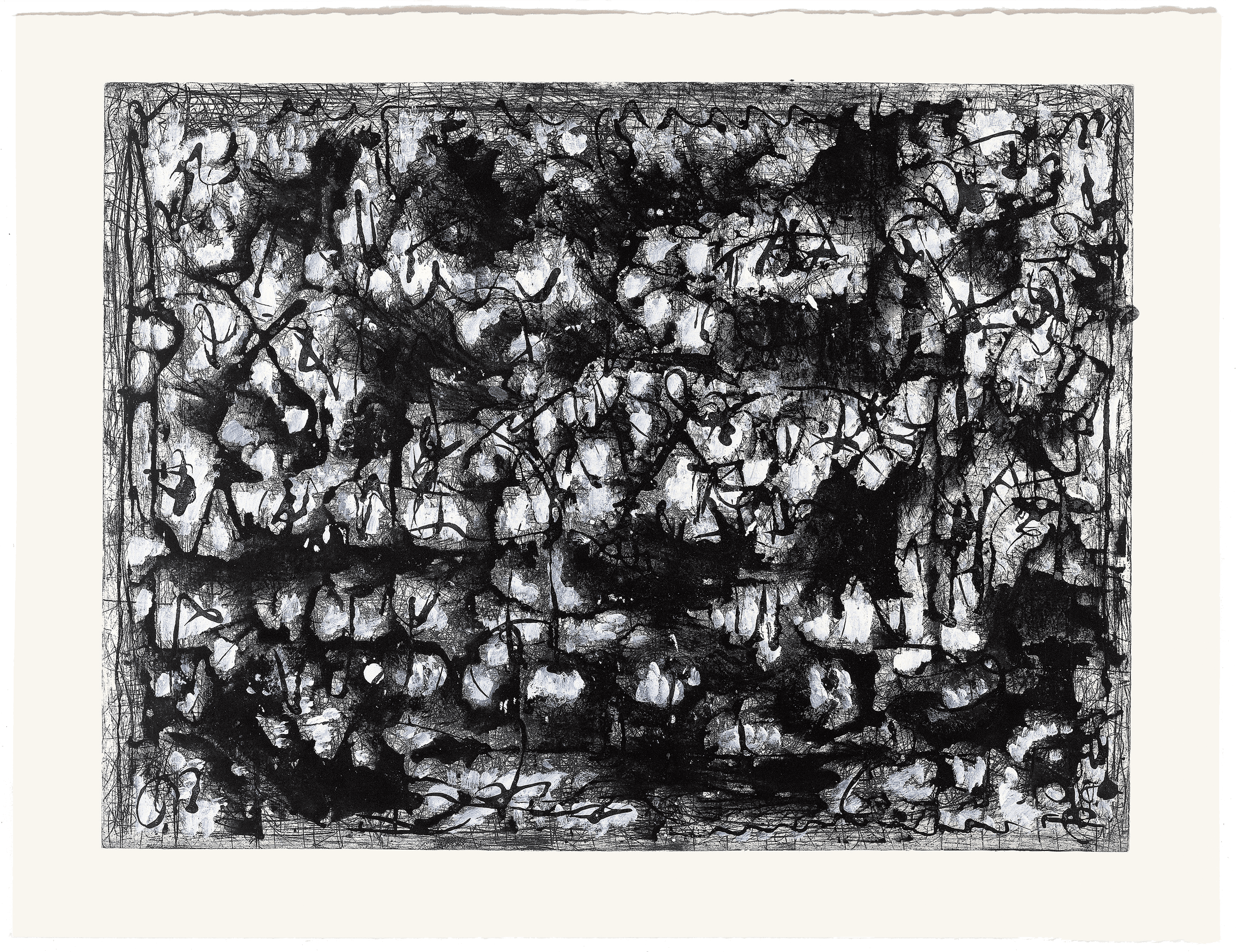
Black and White Landscape, 1979, etching with acrylic, 18 x 23 ⅞ in. (45.7 x 60.6 cm), plate: 17 ¾ x 23 ¾ in. (45.1 x 60.3 cm), sheet: 22 1/8 x 31 in. (56.2 x 78.7 cm)
To create Center Being IV, Pousette-Dart coated a polished metal plate with a protective layer of waxy, resinous ground, and then used a diamond needle to draw through the ground to expose, but not cut into the metal plate beneath, creating a dense mesh of thin, supple lines. Subsequently immersing the plate in an acid bath, the exposed metal was bitten (etched), resulting in shallow incised lines. To print the image, the inked plate was laid face up on the bed of a printing press, and covered by a larger, dampened sheet of paper. Together, paper and plate were rolled through a press under high pressure, pushing the paper’s surface down into the incised lines, transferring the ink from the plate to the paper sheet. When removed from the press, the paper displays a mirror-image imprint of the design drawn by the artist on the metal plate.
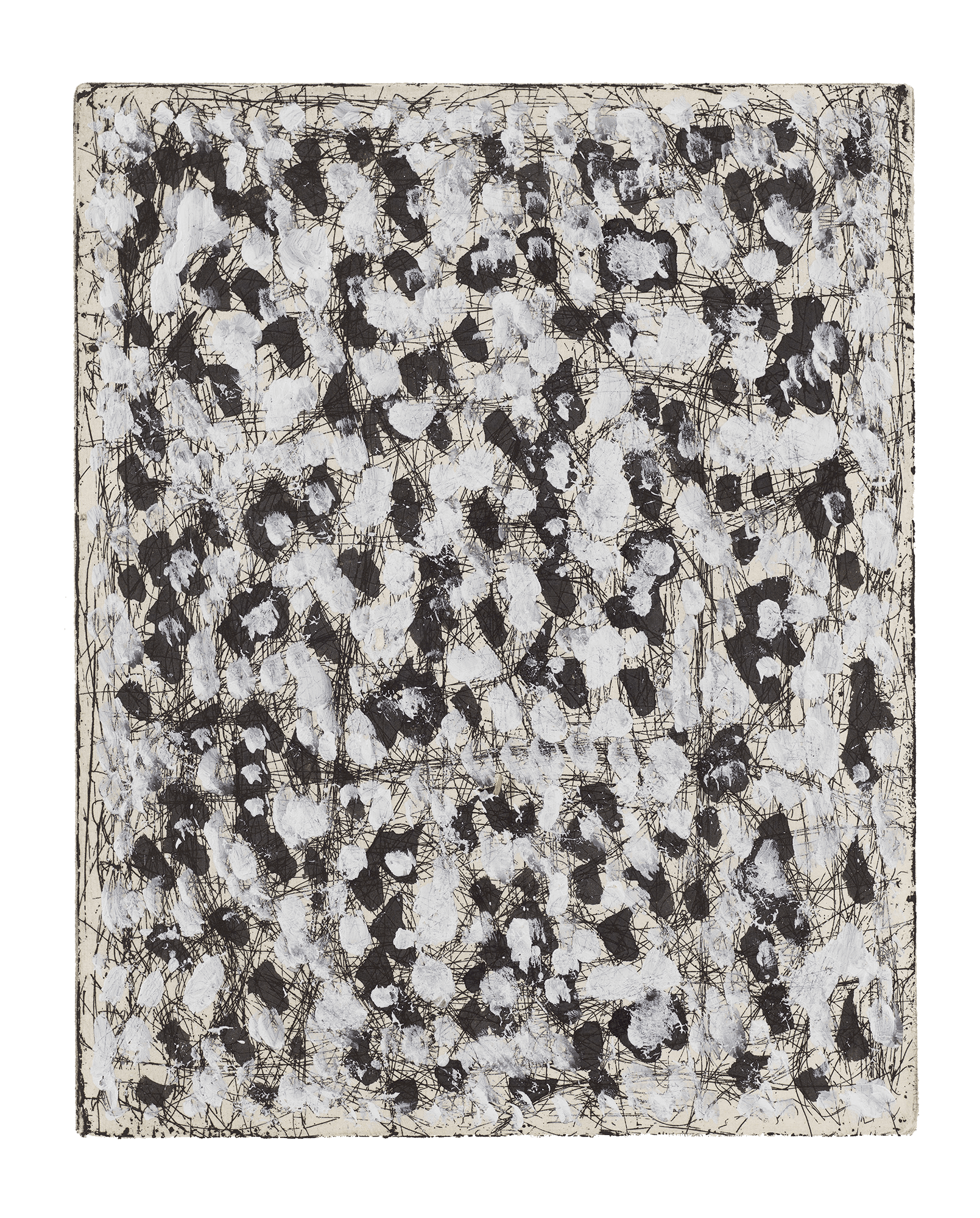
Black Text, 1979, etching with acrylic, sheet: 15 ½ x 13 ¾ in. (39.4 x 34.9 cm)
The various processes by which Pousette-Dart created Center Being IV are also displayed on its paper face: the shallow, rectangular depression caused by pressure on the sharp edges of the metal plate, which also created in the paper’s faintly embossed margins; the slight relief surface of the black lines that constitute the printed image; and the weightless, whiplash energy and slightly friable edges of the bitten lines generated by the initial nearly frictionless movements of the etching needle as it was drawn across the plate’s surface.
Pousette-Dart made his first etchings—profile portrait heads of two women—in 1937, most likely under the guidance of his artist father, Nathaniel. Forty years later, he again took up the medium, much more seriously, most likely inspired by the opportunity to work with master printmaker Sylvia Roth and use the materials, tools, and press equipment available at the Rockland Foundation (now Rockland Center for the Arts), located near his home in Suffern, New York. From 1979 through the early 1980s, etching was the primary area of concentration for Pousette-Dart’s works on paper.
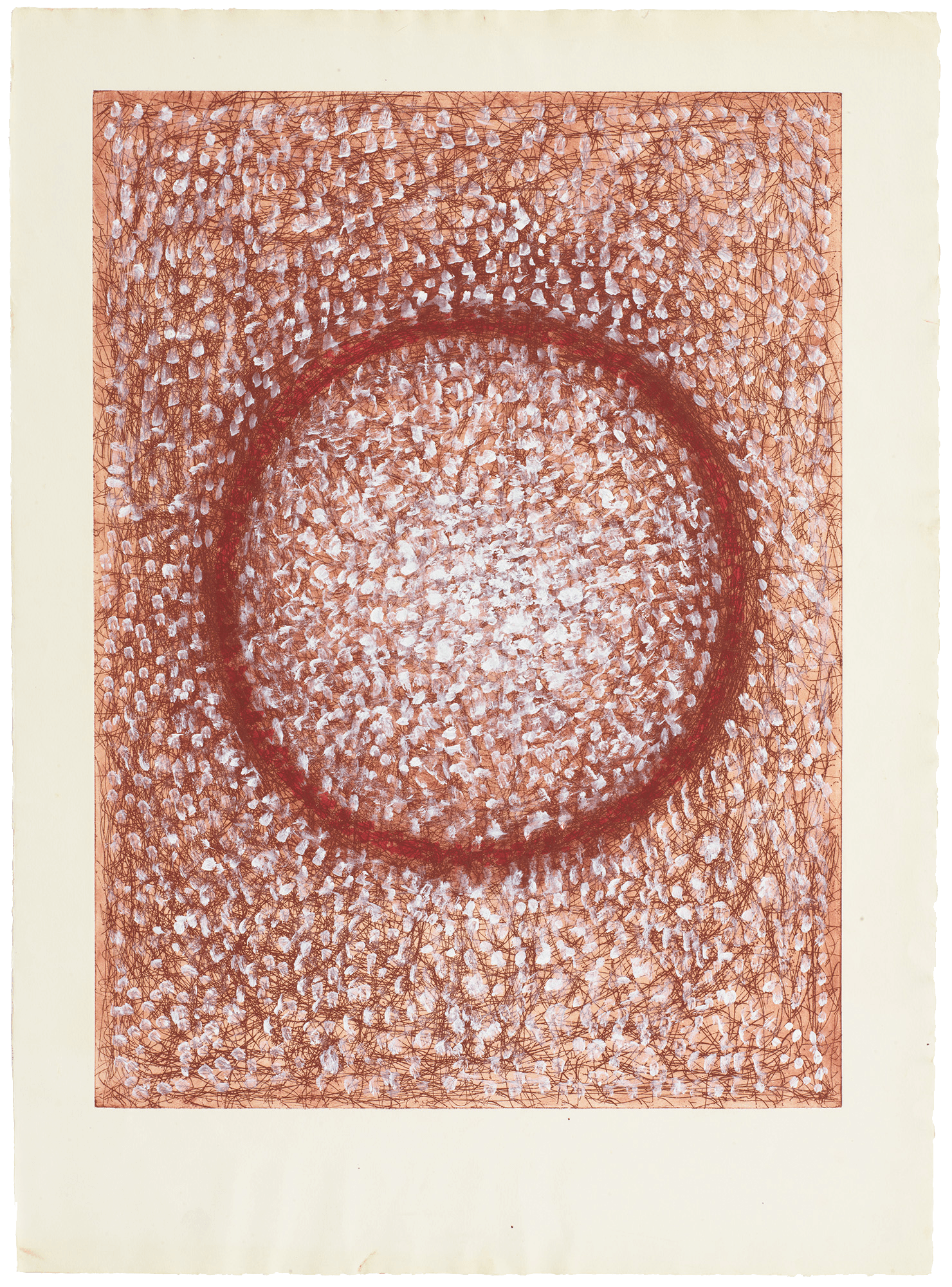
Indian Circle, 1980, etching with gouache and acrylic, 21 ½ x 29 ½ in. (54.6 x 74.9 cm)
Uninterested in exploiting printmaking’s commercial potential or its capacity to produce identical impressions, Pousette-Dart exhibited his prints only once during his lifetime and even the small number of prints he issued in small editions were unique impression. Just as he repeatedly revised his drawings and paintings, sometimes over the course of several years, he delighted in reworking his print compositions: re-etching the metal plates, altering the color, tonality, and application of the printing ink to create variant impressions, occasionally incorporating other intaglio techniques such as aquatint and dry point, and embellishing the initial etched sheets with hand-painted strokes, daubs, and layers of gouache, graphite, India ink, acrylic, gouache, or watercolor.
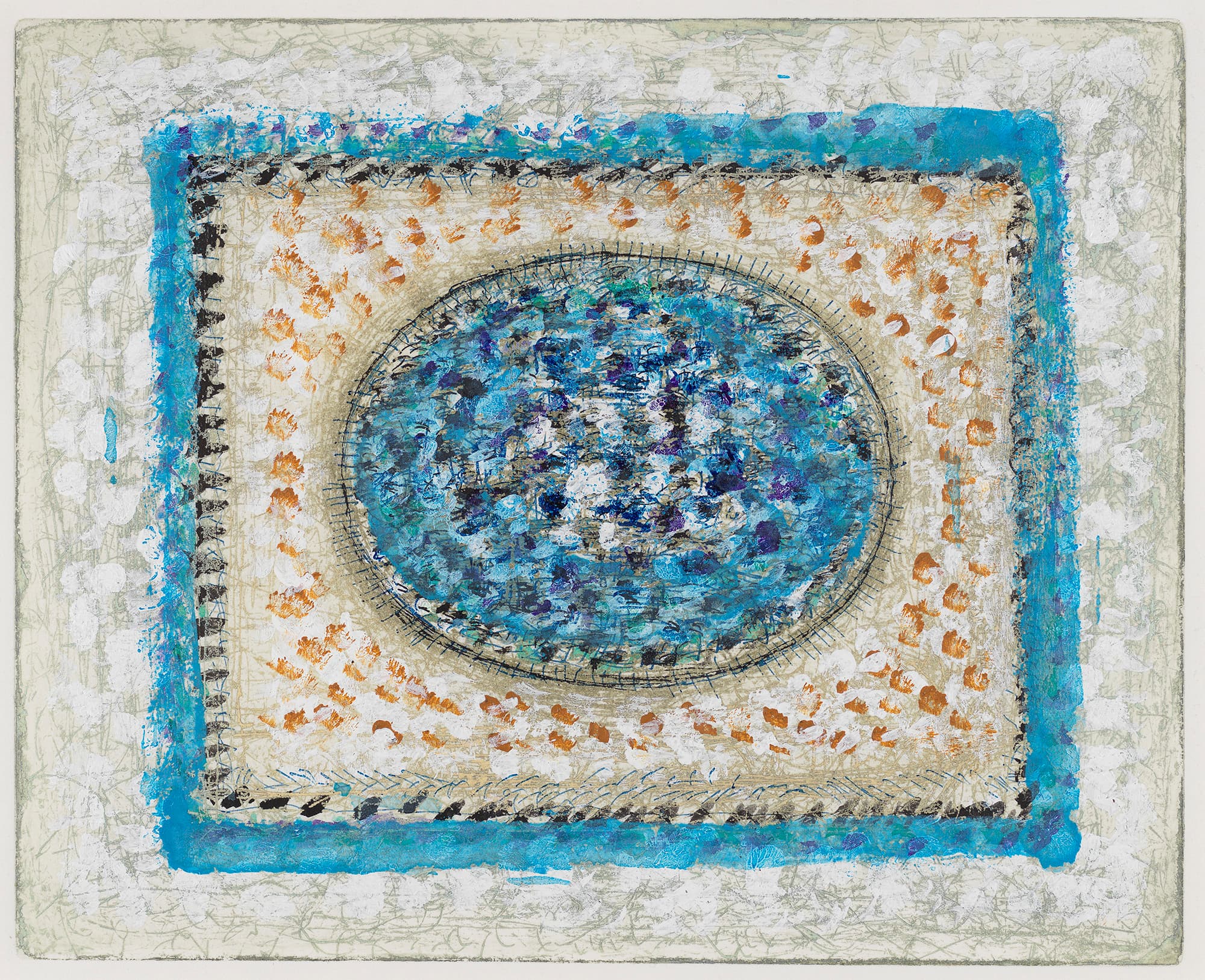
Blue Sonata, 1980, etching with acrylic, plate: 8 x 9 ⅞ in. (20.3 x 25.1 cm), sheet: 13 ⅝ x 16 ⅝ in. (34.6 x 42.2 cm)
The webs of etched lines that remain visible underneath the strokes of black and white acrylic he added to complete Black and White Landscape, 1979, and Black Text, 1979, simultaneously stabilize and foreground their amorphous abstraction and dynamic tactility. The intense colors and geometric compositions of Indian Circle and Blue Sonata, both printed in 1980, and the pulsating all-over field of contrasting hues and values displayed in Sylvia (Spring, Rocks, and Daffodils), first printed in 1979–81, then extensively painted in 1985–88, echo imagery found in his earlier and contemporaneous drawings and paintings. For Pousette-Dart, his interest in acquiring new skills by expanding the range of media in which he worked to include printmaking was an aspect of a lifelong effort to enrich and enlarge his aesthetic vocabulary by fostering an ongoing conversation among all parts of his artistic practice.
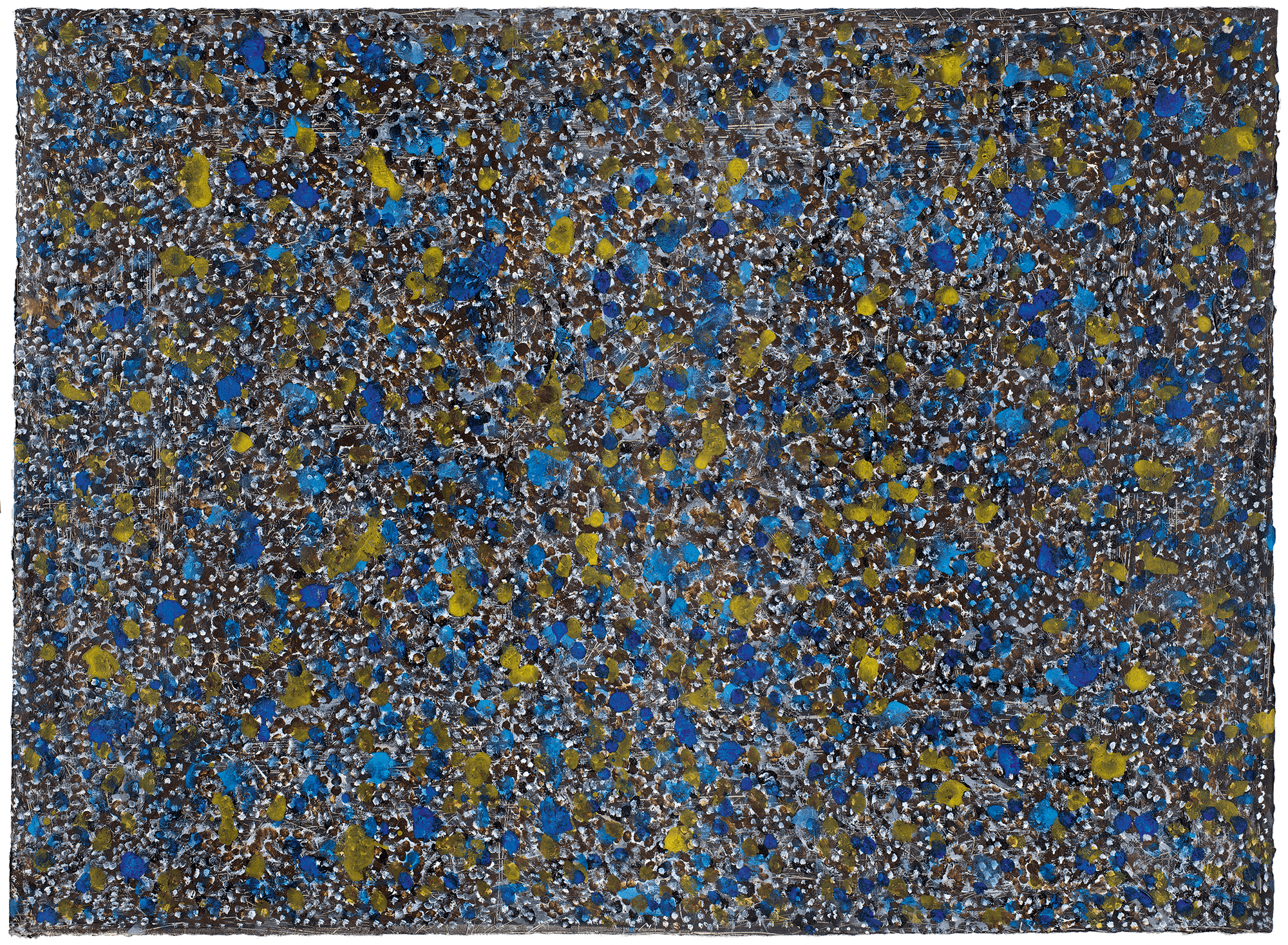
Sylvia (Spring, Rocks, and Daffodils), printed 1979–81, painted 1985–88, acrylic paint over aquatint, with scraping, printed in dark gray ink on wove paper, 30 ¾ x 42 ⅜ in. (78.1 x 107.5 cm)
Susan J. Cooke is an independent scholar of 20th-century art with expertise in catalogue raisonné development